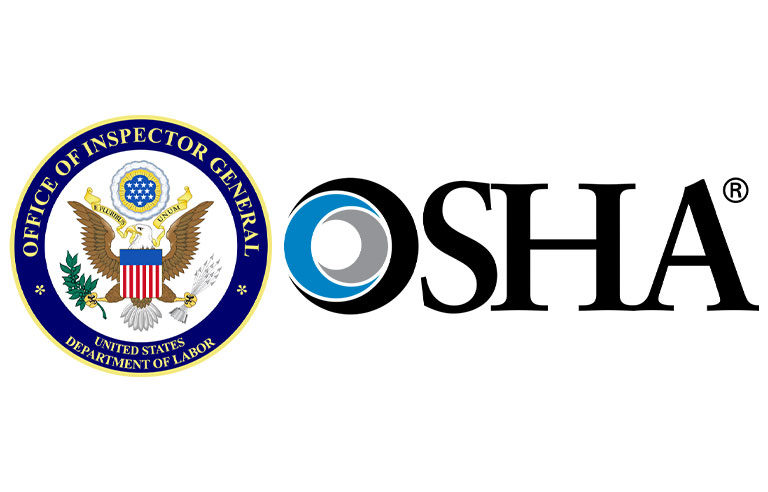OSHA disagrees with many findings in recent DOL OIG audit report

Washington — OSHA’s Field Operations Manual needs an update so the agency can “better address complaints and referrals,” the Department of Labor Office of Inspector General says.
However, OSHA disagrees with many of the conclusions of DOL OIG’s audit report.
Conducted by an outside firm, the audit involved a review of 100 complaint and referral cases that were opened and closed between fiscal years 2019 and 2020. The Lopez Group determined that OSHA didn’t “ensure complaints and referrals were adequately addressed nor regularly enforce hazard abatement timelines.”
OSHA spoke to the complainant in 38 of 76 sampled complaints, according to the report. It adds that case files didn’t have “clear reasoning” as to why an inspection wasn’t conducted in 11 of the 30 cases in which a complaint or referral met OSHA’s criteria for inspection.
“Finally, Lopez found OSHA did not regularly ensure safety and health violations from complaints and referrals were corrected in a timely manner,” the report states.
DOL OIG calls on OSHA to:
- Modify the Field Operations Manual to include a policy for mandatory interviews of complainants and witnesses or document the rationale for lack thereof, and provide training to OSHA inspectors on the updated requirements.
- Update the manual to require documented case file review and approvals by supervisors, and provide training for OSHA inspectors to ensure complete documentation of significant decisions and actions.
- Establish controls and provide training of Field Operations Manual abatement certification and documentation requirements, and create a monitoring process that’s reviewed and approved by a supervisor.
In his response, OSHA administrator Doug Parker contends that the main limitation of the audit “is stated in the audit itself”: The report notes that it doesn’t project results of the sampled cases on all unprogrammed complaint- and referral-initiated inspections. Despite this, Parker says, DOL OIG makes declarative statements and advises changes to OSHA policy based on that small sample of complaints and referrals. Parker and Richard Lopez, certified public accountant and partner with the Lopez Group, also disagree on whether the criteria used for the sample size were provided to OSHA.
Parker says that although OSHA could do a better job of communicating with complainants, the report is asking the agency to perform interviews for the sake of performing interviews in some cases. “The Lopez Group/OIG confuses the importance of good communication with complainants … with the importance of identifying and obtaining information from witnesses that will advance the investigation,” he writes.
Lopez recommends that OSHA inspectors document why they aren’t interviewing a complainant when they deem it unnecessary. Parker points out that 10 of the 11 sampled cases that didn’t have an ensuing inspection were nonformal complaints or referrals. Lopez maintains that nonformal complaints still need documentation on why an inspection wasn’t conducted. Parker counters that OSHA would provide additional training to supervisors on documentation but he doesn’t see a need to change or update agency policy.
Parker also noted that the audit “did not reveal any evidence that a documentation issue resulted in a hazard not being addressed.”
In disagreeing with the third recommendation, Parker says the audit “did not assess whether hazards were mitigated in any way, whether a work process was no longer active or whether OSHA had authority to require abatement of a hazard at any time.”
For example, the audit contends, one employer didn’t provide evidence of hazard abatement for 149 days after receiving a complaint. Parker says that the hazard involved a trench and the trench no longer existed during that 149-day period.
“The auditors must rely on the evidence available, and no evidence was provided to support a different date for when abatement occurred,” Lopez writes.
Post a comment to this article
Safety+Health welcomes comments that promote respectful dialogue. Please stay on topic. Comments that contain personal attacks, profanity or abusive language – or those aggressively promoting products or services – will be removed. We reserve the right to determine which comments violate our comment policy. (Anonymous comments are welcome; merely skip the “name” field in the comment box. An email address is required but will not be included with your comment.)

